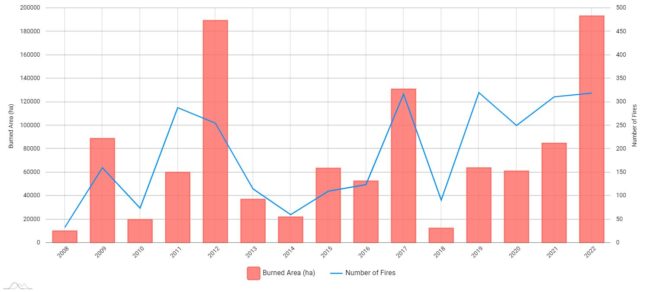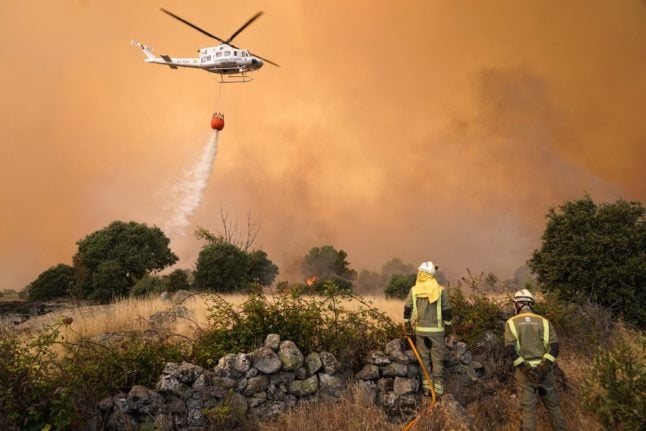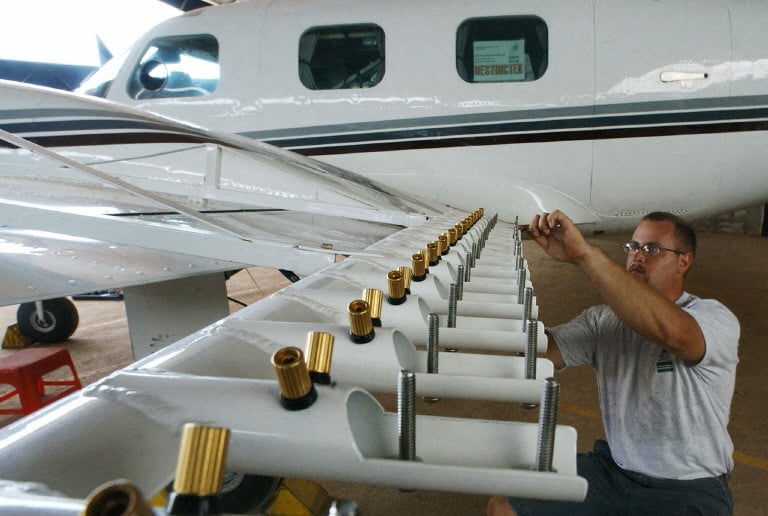Not only is Spain suffering scorching summer temperatures this year, but record breaking forest fires are raging across the country.
According to the European Forest Fire Information System (EFFIS) as of Wednesday 20th July, 193,247 hectares of land – and rising – have burned in just seven and a half months, with two or perhaps three months of high temperatures still to come.
The EFFIS data, which uses Copernicus satellites to track the fire coverage, shows that Spain has already reached its highest destruction mark since 2012 – when 189,376 hectares were razed to the ground – but has achieved the fiery milestone by July.
According to the data, Spain is the European country that has suffered the worst wildfires so far this year, with 0.38 percent of its national territory affected, followed by Romania, France, Croatia and Italy.
A natural disaster analyst from Spain’s Military Emergency Unit (UME), Roberto García, told the Spanish press that the near-uncontrollable fires surpassed even their worst predictions.
“We didn’t think it was going to be like that,” García said, adding that a combination of the record-breaking heat waves, an unusually dry winter, and a pronounced lack of rainfall during 2022 have worsened conditions.

Hotspots
In recent weeks Spanish news reports have been replete with images of firefighters fighting the blazes and helicopters dropping water onto the forest fires. But, despite the best efforts of the authorities, fires still continue to burn across Spain.
In Galicia, fires are ongoing, and as of Wednesday 20th July, 30,000 hectares of land have burned. In the northern region, two areas are of concern: Lugo, with about 11,100 hectares affected, and that of Valderras, in Ourense, which already reached 10,500, according to the Ministry of Rural Environment.
14,000 hectares have also burned in Zaragoza, in Spain’s northern Aragon region. The Ateca municipality has been heavily affected, reportedly worsened by a change of wind direction during the night from Tuesday to Wednesday. So far, it is estimated that there are about 14,000 hectares affected in Zaragoza overall and as many as 1,700 people have been displaced from five municipalities.
In Ávila, Castille and Leon province, fires are also ongoing and as of yet uncontrolled, and like in Zaragoza have been worsened by changing winds. It is believed the fires in Ávila were started by a cigarette butt, and have so far destroyed around 4,000 hectares and displaced 2,100 local residents.
In Guadalajara, the Valdepeñas de la Sierra area has faced fires since Tuesday, covering an area of around 3,000 hectares and forcing the evacuation of hundreds of local residents.




 Please whitelist us to continue reading.
Please whitelist us to continue reading.
Member comments